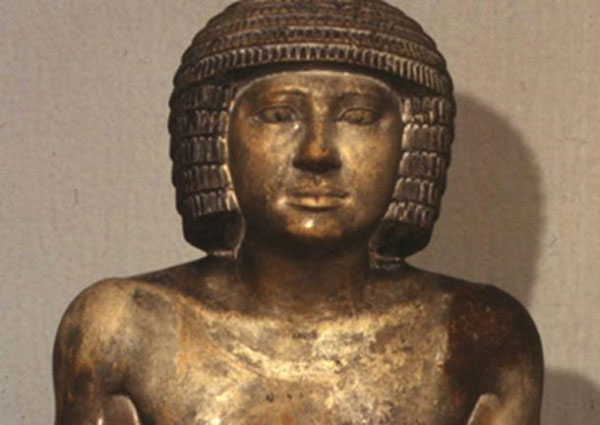Can the statue of Sekhemka be saved in the eleventh hour?
Egyptian officials are trying to stop the sale of a 4,400-year-old Egyptian statue by Northampton Museum in England, which is due to take place today. The Council decided to auction off the historic Egyptian statue of Sekhemka in order to help pay for the £14m expansion of the museum and art gallery. The shameful sell-off has caused outrage among town historians, Egyptologists, and many citizens of Northampton, who have argued that the sale is unethical and will lead to the museum losing its accreditation with the Museums Association. But these views have been ignored by the council, despite extensive petitioning and many heartfelt pleas. The sale of the ancient artifact for between £4m and £6m is scheduled to take place today at Christie’s Auction House in London.
The Egyptian Antiquities Minister Mamdouh el-Damaty is making a last ditch attempt to halt the auction by calling on the International Council of Museums to intervene, claiming the sale “breaches all museum ethics”, and presenting petition signatures from Egypt, the UK, Belgium and Canada. The embassy of Egypt in London has also demanded the suspension or postponement of the sale. Nevertheless, Northampton Council said Egypt had no claim on the statue and the sale would go ahead.
The statue of Sekhemka was made in about 2400 BC and shows two seated figures with the clarity, seriousness and grace that makes Egyptian art so powerful. Sekhemka was a man of some importance. He is named in an inscription on the plinth of his statue as “Inspector of Scribes in the House of Largesse, one revered before the Great God”. The figure was worked from limestone, mined from the quarries at Tura in Lower Egypt, and had two purposes – to ensure the physical appearance of the dead person and to ensure, by naming them, the offerings to be made for his survival in the afterlife. Sekhemka is shown holding a roll of papyrus on which are listed these offerings. These include bread, beer, wine, perfume, cedar oil and linen clothing.

Sekhemka holds a papyrus listing his offerings. Credit: Sekhemka Action Group
At Sekhemka’s feet is a woman on a much smaller scale, who is thought to be Sit-merit, the wife of Sekhemka. Her body was originally painted with a dark blue dress, little trace of which remains apart from on her chest. Sit-merit wears a full wig, as was usual for people of high status in ancient Egypt. The small size of the wife emphasises the importance of Sekhemka as the owner of the tomb statue, which was increasingly a practice of the later Old Kingdom.

The full statue of Sekhemka. Credit: Sekhemka Action Group
It is thought the statue was acquired by Spencer Compton, the second Marquis of Northampton, during a trip to Egypt in 1850 – a time in which the search for antiquities in Egypt gained pace. The necropolis or burial city at Saqqara near Cairo is the site of many tombs and one of these is believed to have belong to Sekhemka.
Talks have been in process for some time with Lord Northampton, whose family donated the statute to the town more than a hundred years ago, leading to the final agreement that Lord Northampton will receive 45 per cent of the sale price and the borough council will get 55 per cent.
During a last unsuccessful motion to prevent the sale earlier this week at a Northampton Borough Council meeting, the vote leader of the authority Councillor David Mackintosh proudly told the chamber: “We are looking forward to selling the statue and looking at how best to invest the money in the cultural future of this town.”
But what about the cultural future of the country and indeed the world? It is well known that the private sale of antiquities encourages looting, smuggling and corruption, and the council’s sell-off of the priceless Egyptian treasure contributes to this dark world of dealing. Overall, the sale reflects a decline in intellectual ambition, cultural seriousness and global consciousness and councils must learn now that selling great art and historical treasures is no way to build for the future.
Featured image: The statue of Sekhemka. Photo source: Northampton Chronicle




















Comments
"Egypt hold no claim on the statue"
really now?! I would love to hear where the statue really came from them.
All this (besides and outrage) is somebodys bonus, becaue after a move like this will a 'expansion' really be useful?
of course there's nothing about this in the news. sadly i'm sure the sale will go on...
love, light and blessings
AB